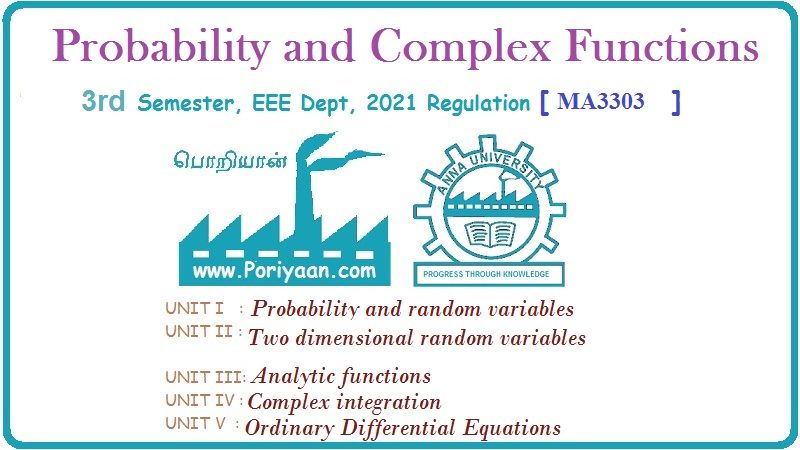Probability and complex function: Unit V: Ordinary Differential Equations
Method of undetermined coefficients
Ordinary Differential Equations
In the given equation f (D) y = X, to find the P.I, we assume a trial solution containing unknown constants which are determined by substitution in the equation.
METHOD OF UNDETERMINED COEFFICIENTS
In
the given equation f (D) y = X, to find the P.I, we assume a trial solution
containing unknown constants which are determined by substitution in the
equation.
The
trial solution in each case depends on the form of X.

Case
(a): Straight case
If
the R.H.S function X is not a member of the solution set, then choose P.I, (yp)
from the above table depending on the nature of X.
Case
(b): Sum case
When
the R.H.S. X is a combination (sum) of the functions in column 2 of the table,
then P.I. is chosen as a combination of the corresponding functions in third
column and proceed as in straight case (a).
Note:
Here also as in case (a), the terms of R.H.S. X are not members of the solution
set S.
Case
(c) Modified case
When
any term of X is a member of the solution set S, then the method fails if we
choose yp from the table. In such cases, the choice from the table should be
modified as follows:
(1)
If a term u of X is also a term of the complementary function (i.e., u ∈S = solution set) then
the choice from the table corresponding to u should be multiplied by
(a)
x if u corresponds to a simple root of C.F.
(b)
x2 if u corresponds to a double root of C.F
(c)
xS if u corresponds to a s-fold root of C.F
(2) Suppose x1u is a term of X and u is a term
of C.F corresponding to an s-fold root then the choice from the table
corresponding to should be multiplied by xS.
Probability and complex function: Unit V: Ordinary Differential Equations : Tag: : Ordinary Differential Equations - Method of undetermined coefficients
Related Topics
Related Subjects
Probability and complex function
MA3303 3rd Semester EEE Dept | 2021 Regulation | 3rd Semester EEE Dept 2021 Regulation
